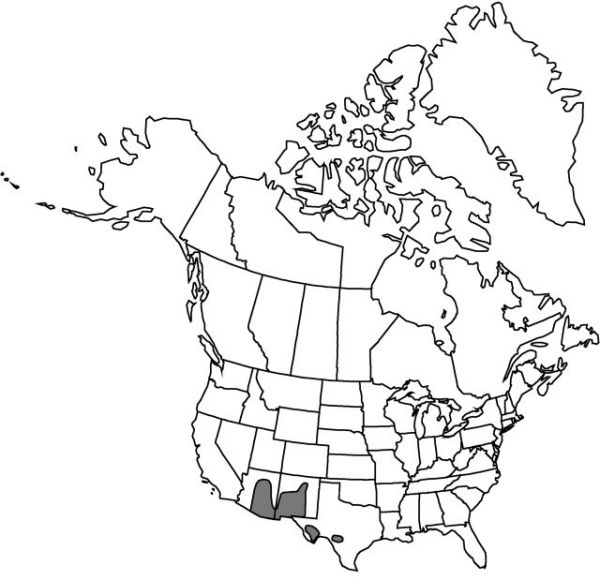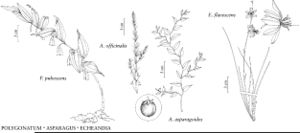Echeandia flavescens
Sida 9: 146. 1981.
Storage roots enlarged 1–2(–4) cm from corms, (1.5–)2–5 cm. Leaves: basal 3–15, 8–40 cm × 0.5–9 mm, blade very narrowly linear to narrowly linear, margins denticulate, ciliate; cauline 0–3, (0.5–)1–9(–13) cm, blade long-acuminate in most specimens, the proximal not exceeding next node. Inflorescences 1–2, 0–1(–3)-branched, 20–60(–84) cm, wholly glabrous or scabrescent toward base. Flowers facing upward or away from scape; tepals elliptic, (7.5–)9–15 mm, outer 2–4 mm wide, inner 4–8.5 mm wide; filaments inserted in open pits, narrowly cylindric to narrowly clavate, 4–8.5 mm; anthers distinct, versatile, 1.5–3.5 mm; ovary 2–5 mm. Capsules broadly oblong to oblong, 7–16 × 3–6 mm. 2n = 16, 32, 48.
Phenology: Flowering (late May–) mid Jul–early Oct.
Habitat: Desert grasslands, pinyon-juniper woodlands, juniper-oak-pine woodlands, openings in yellow-pine and pine-fir-spruce forests
Elevation: 1500–2900 m
Distribution

Ariz., N.Mex., Tex., Mexico.
Discussion
Echeandia flavescens is a highly variable polyploid complex. Most specimens from the flora fall into one of three groups: slender plants with leaves 1–4 mm wide and capsules 7–11 mm; slender plants with leaves 1–4 mm wide and capsules 12–15 mm; and more robust plants with leaves 4–9 mm wide and capsules 12–16 mm. The first plants are diploids and the last two are hexaploids and octoploids, respectively. The robust morph was described as Anthericum stenocarpum and has been collected at scattered locations throughout the distributional range of the species. Because the correlation between morphology and ploidy level breaks down across the distributional range, no infraspecific taxa are recognized.
Selected References
None.
